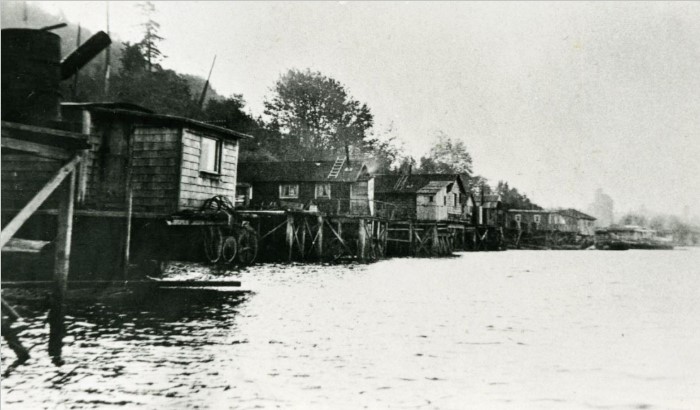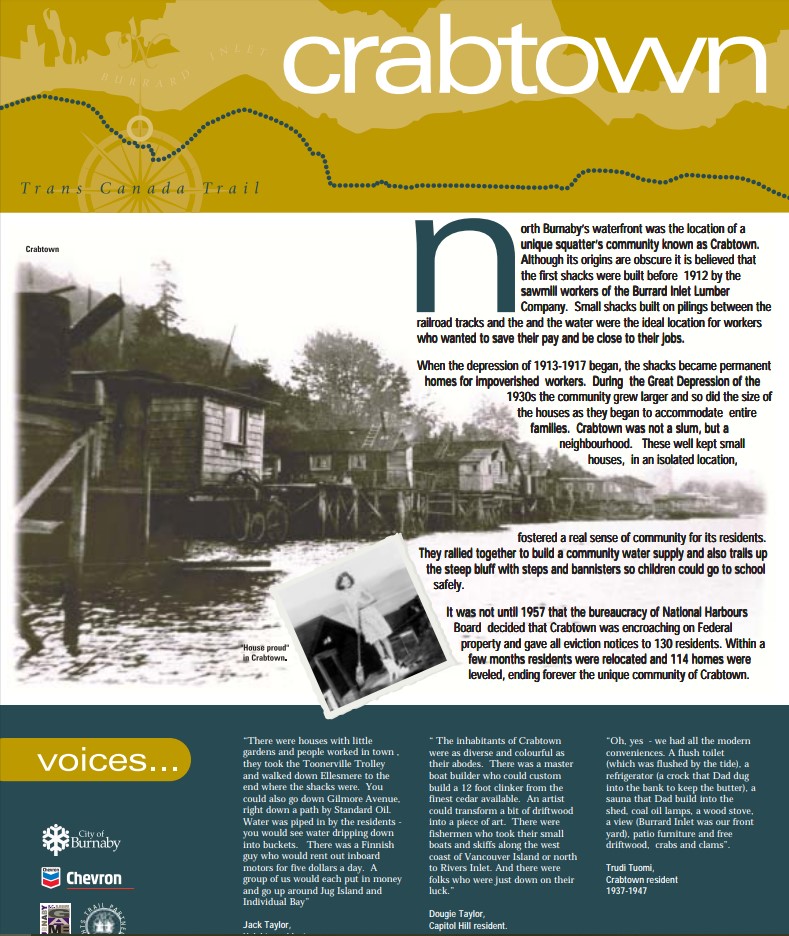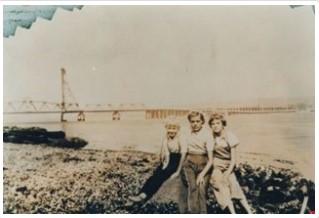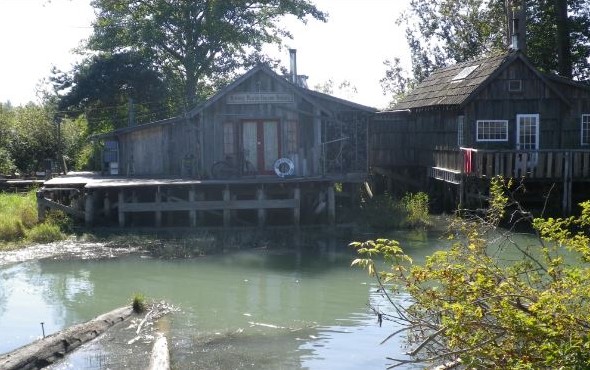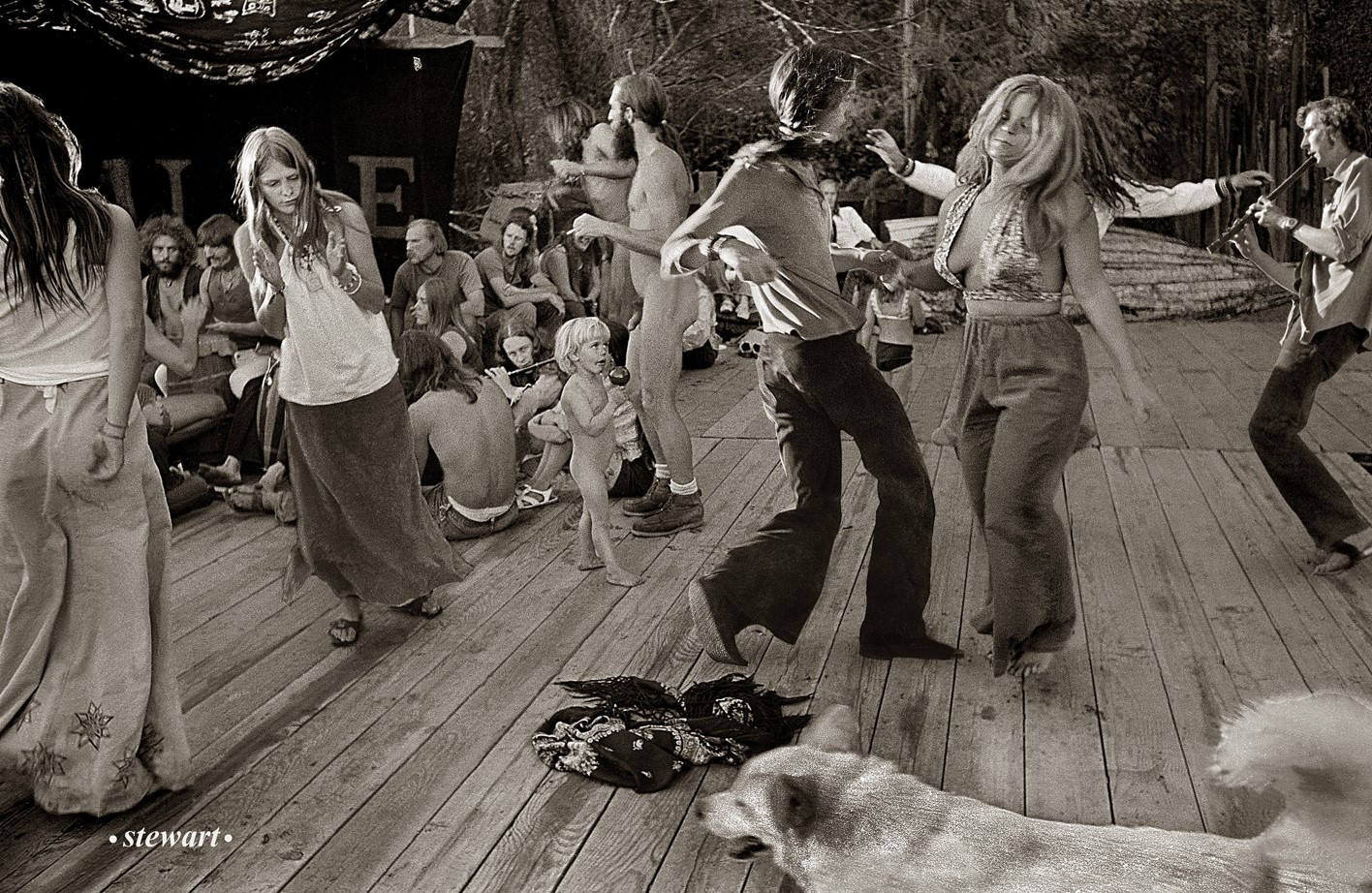
The Dollarton Pleasure Faire was held in the summer of ’72 at the Maplewood Mudflats in North Vancouver. It was a celebration of alternative living, an acknowledgement that its days were numbered, and it was timed to clash with the annual PNE.
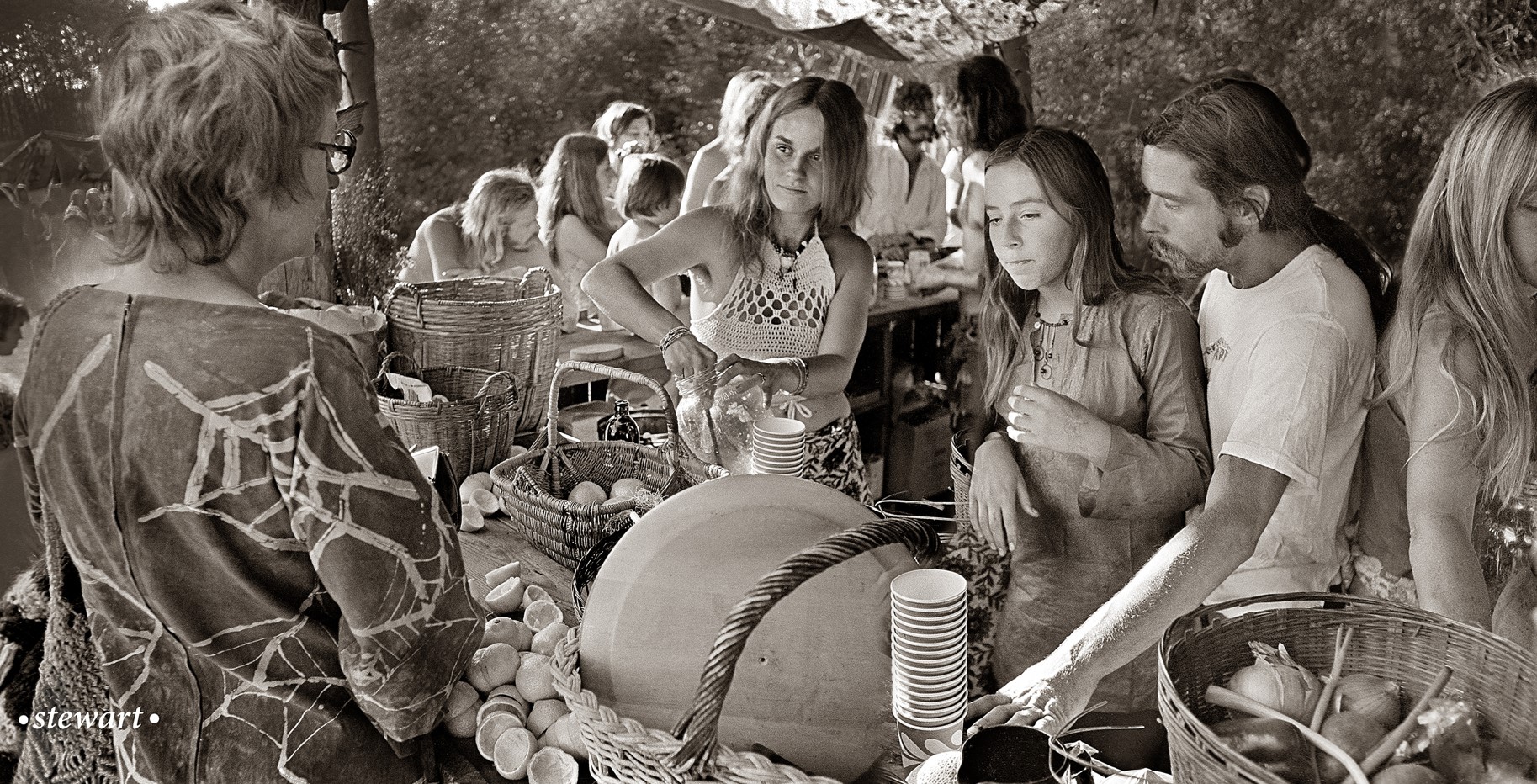
At least as far back as the 1940s, squatters were part of a long tradition of settlements such as Crabtown in North Burnaby and Finn Slough in Steveston. On the North Shore, the squatter community stretched from what’s now called Cates Park to the Maplewood mudflats, about a click or two east of the Ironworkers Memorial bridge.
From Vancouver Exposed: Searching for the City’s Hidden History
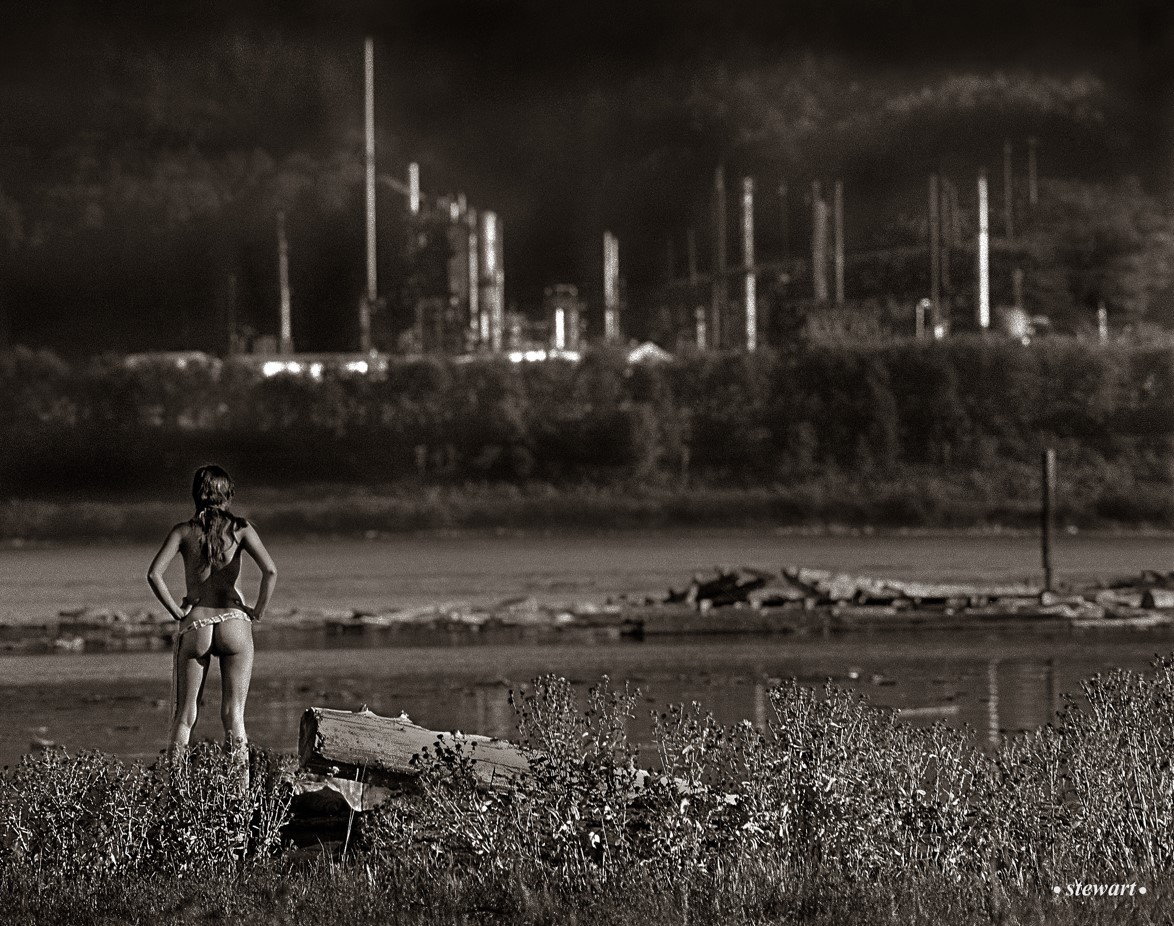
Under Threat:
By 1971, their lifestyle was under threat. The District of North Vancouver was determined to rid the land of squatters and replace their homes with a development that would rival Lonsdale Quay. The first round of evictions and burnings occurred in 1971.
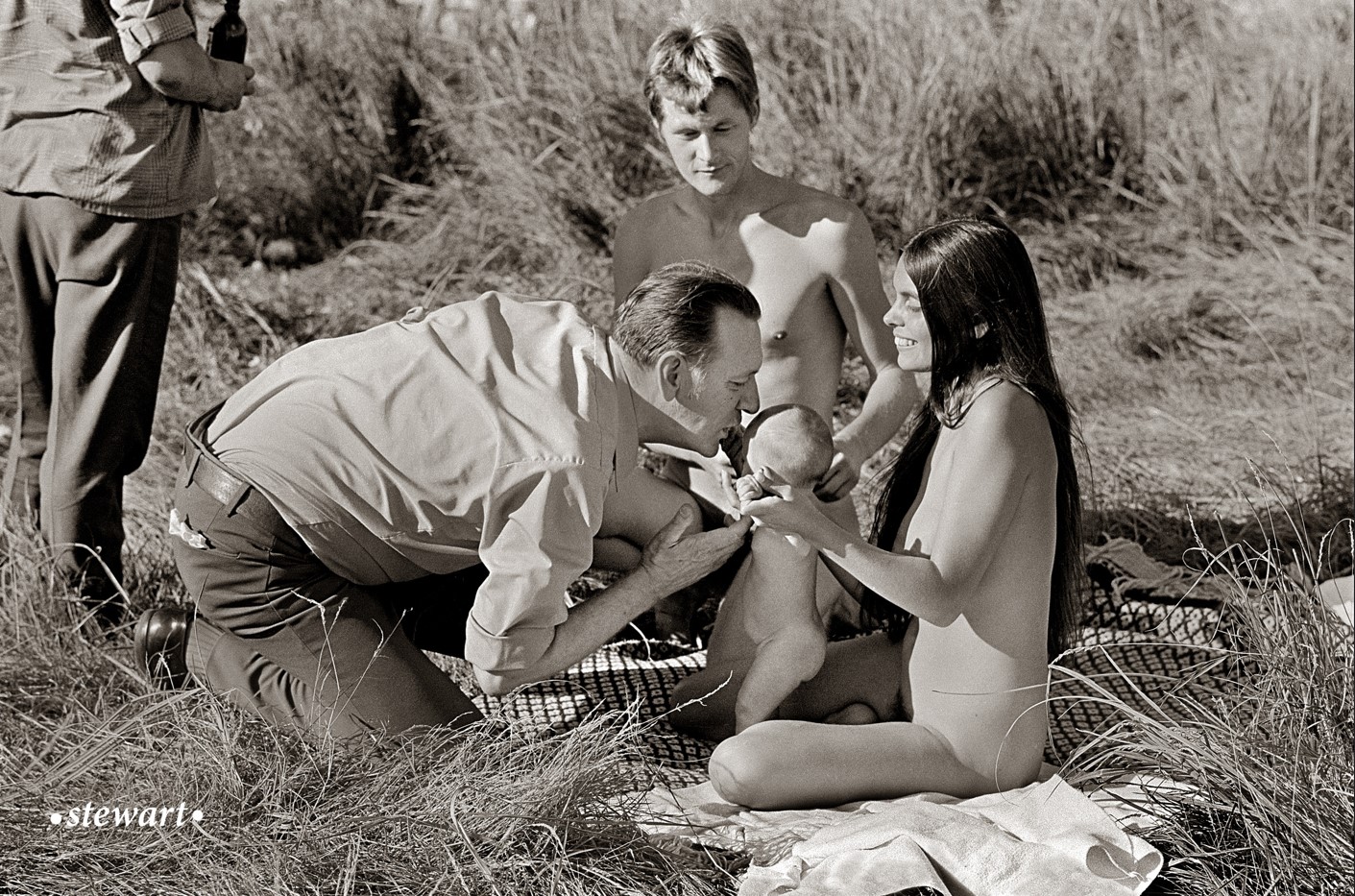
The two-week long Dollarton Faire in August 1972 was a show of support—the mudflat squatter community versus the District.
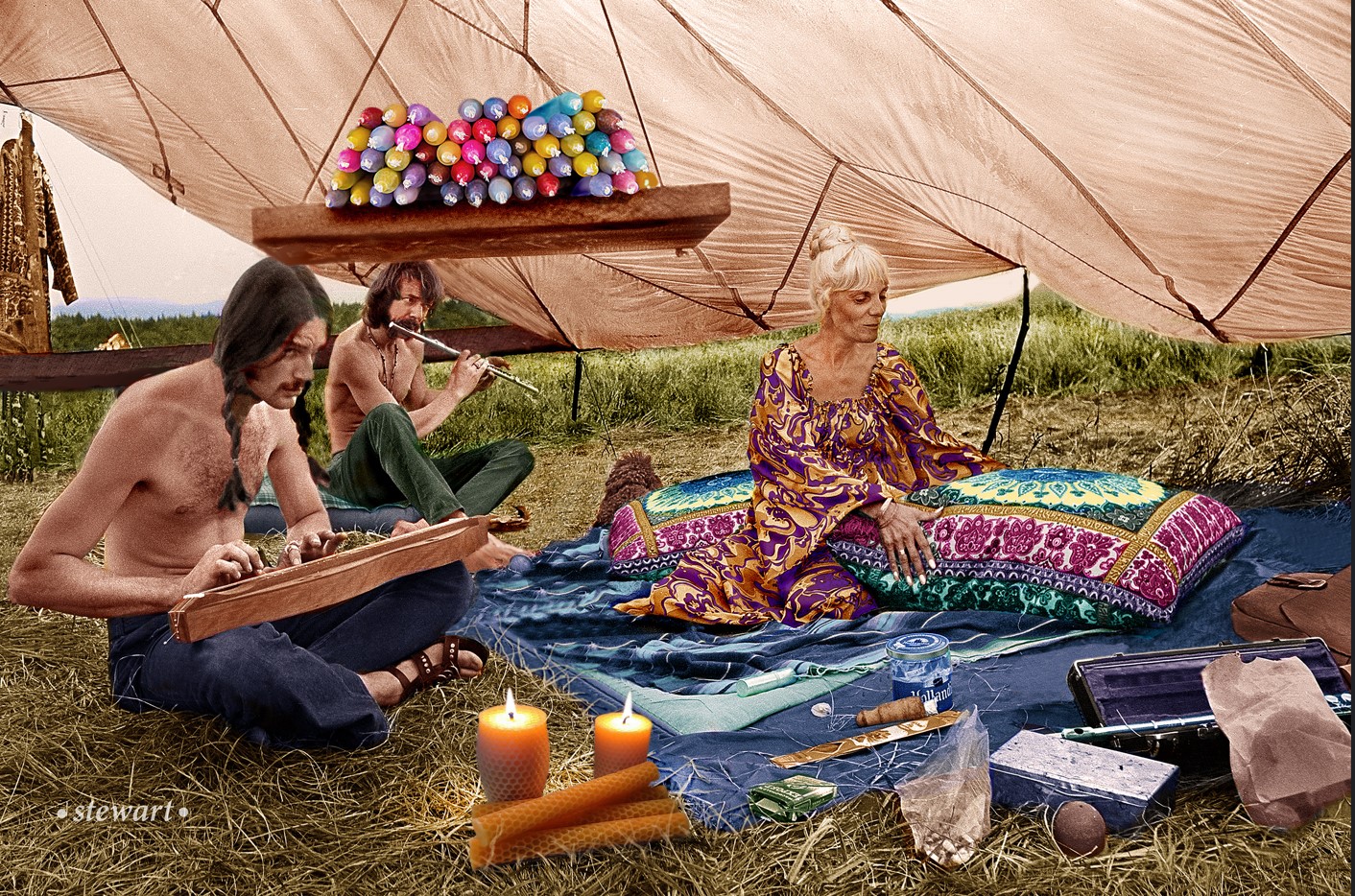
Bruce Stewart had recently returned from art school in Los Angeles and was living in Kitsilano when he heard about the Faire. Bruce had met Danny Clemens and Ian Ridgway at the Mission Faire the previous summer and asked them for permission to document the event.

Clemens and Ian Ridgway also had serious carpentry skills and both worked on the set of Robert Altman’s movie McCabe & Mrs. Miller through most of 1970.
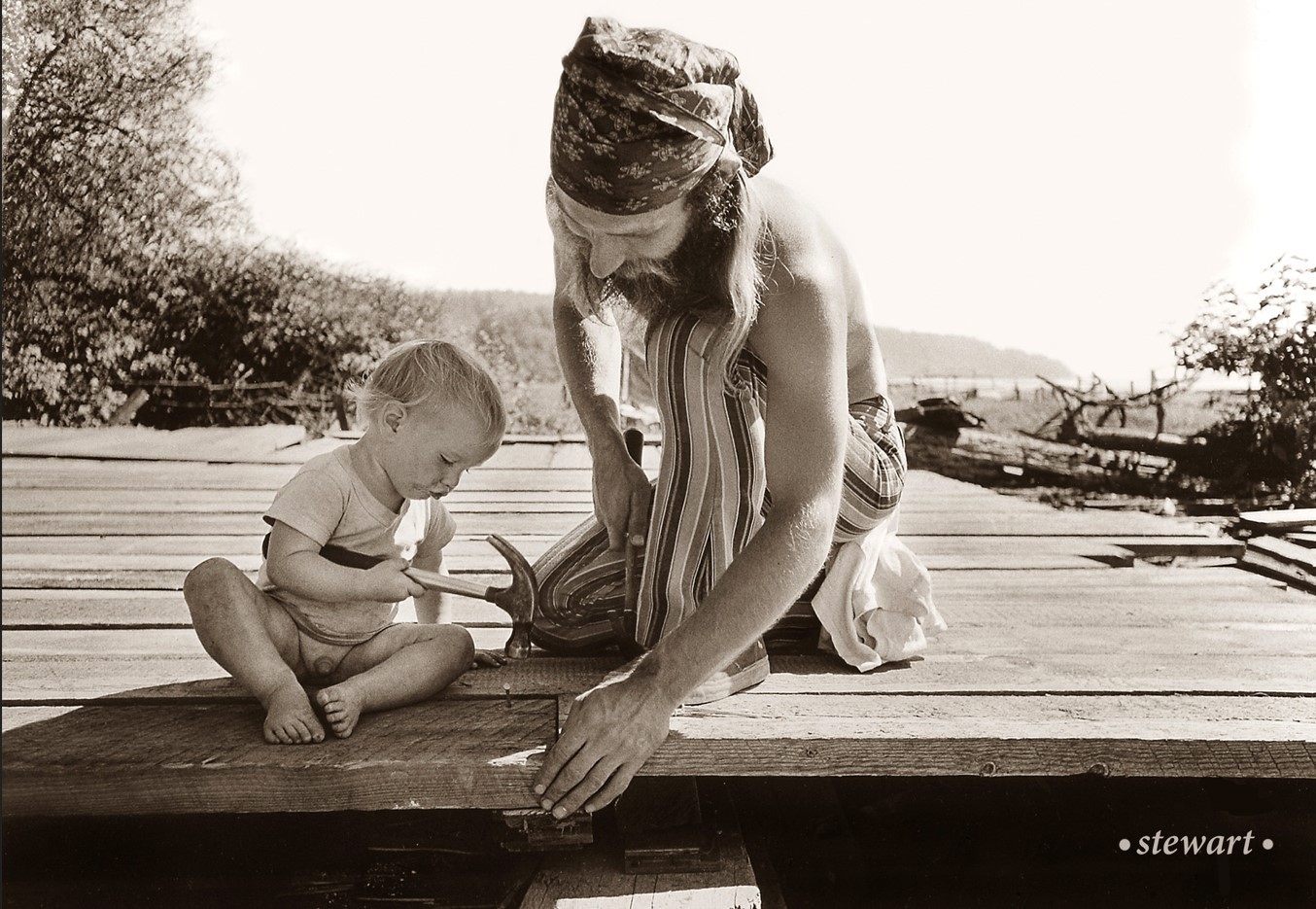
Artist Colony:
Bruce found an artist colony living in houses made from recycled materials—old pieces of boats that had washed up on the mudflats and timber and windows and bits and pieces collected from heritage homes being demolished in other parts of the city.
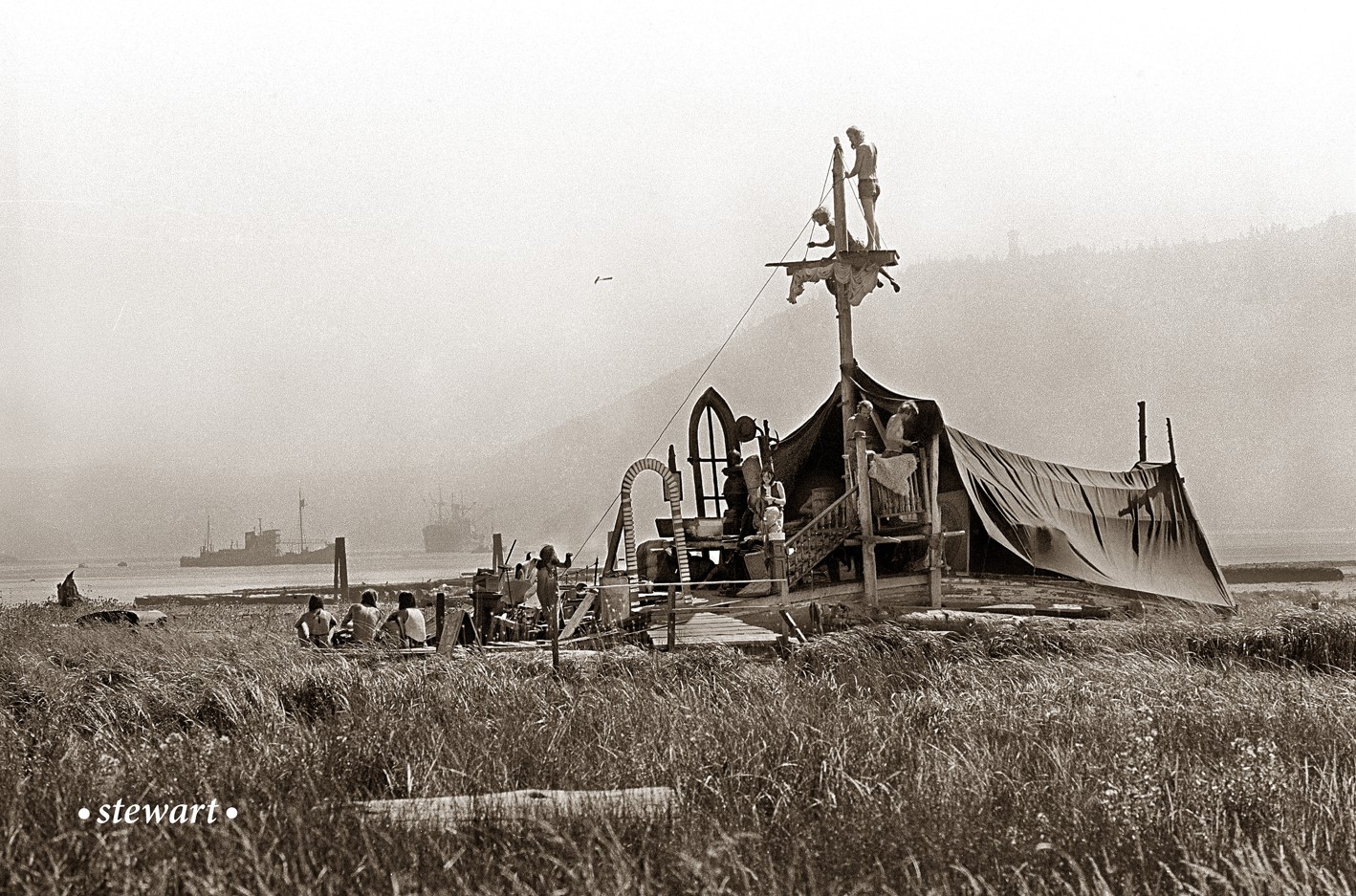
There was the Pirate Ship house created from the abandoned hulk of a boat that was resting on a log. And there was the Glass House, an A-frame construction with assorted bric-a-brac and salvaged windows.
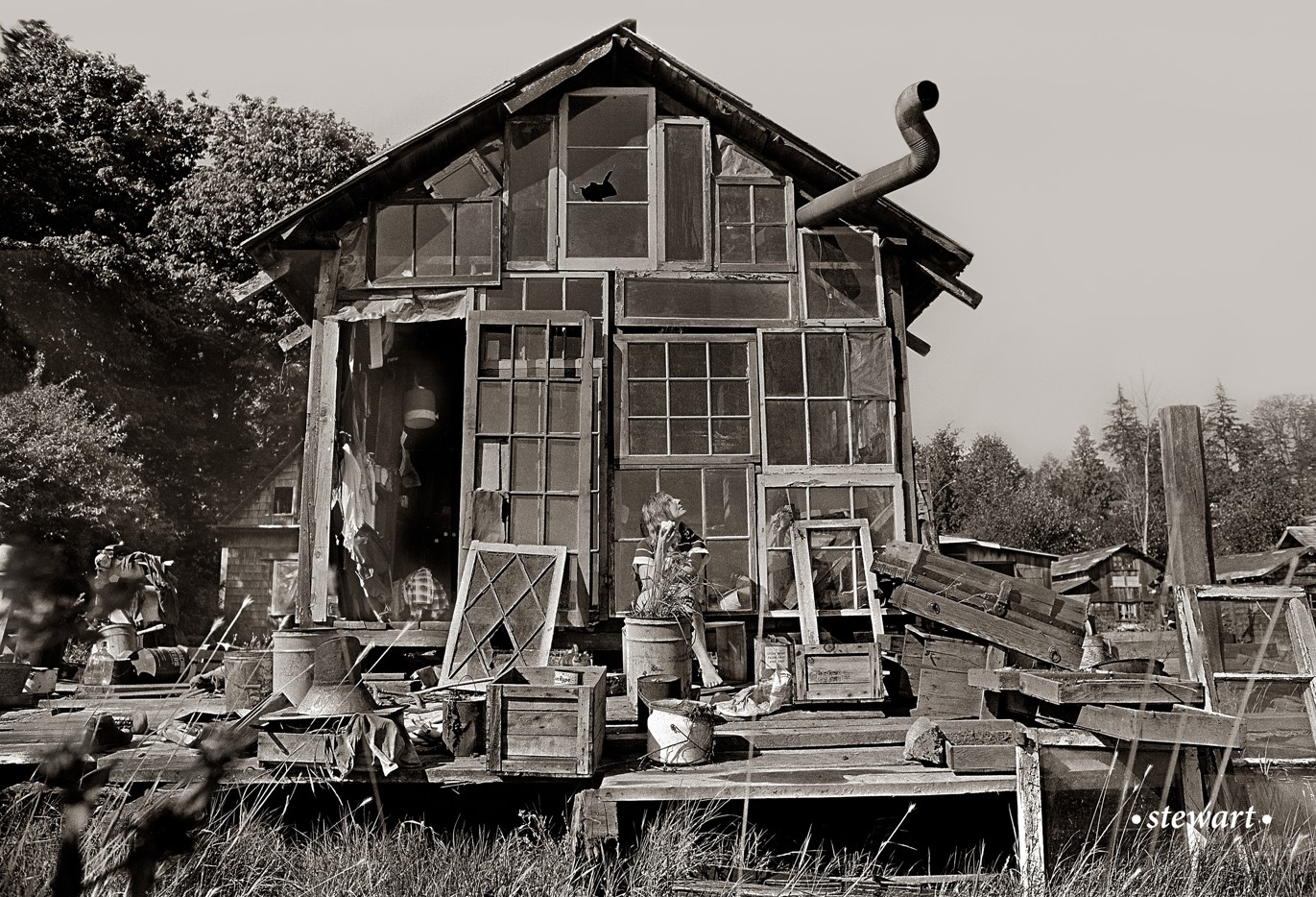
McCartney Creek was dammed up to create a swimming hole where people could cool off during the Faire.
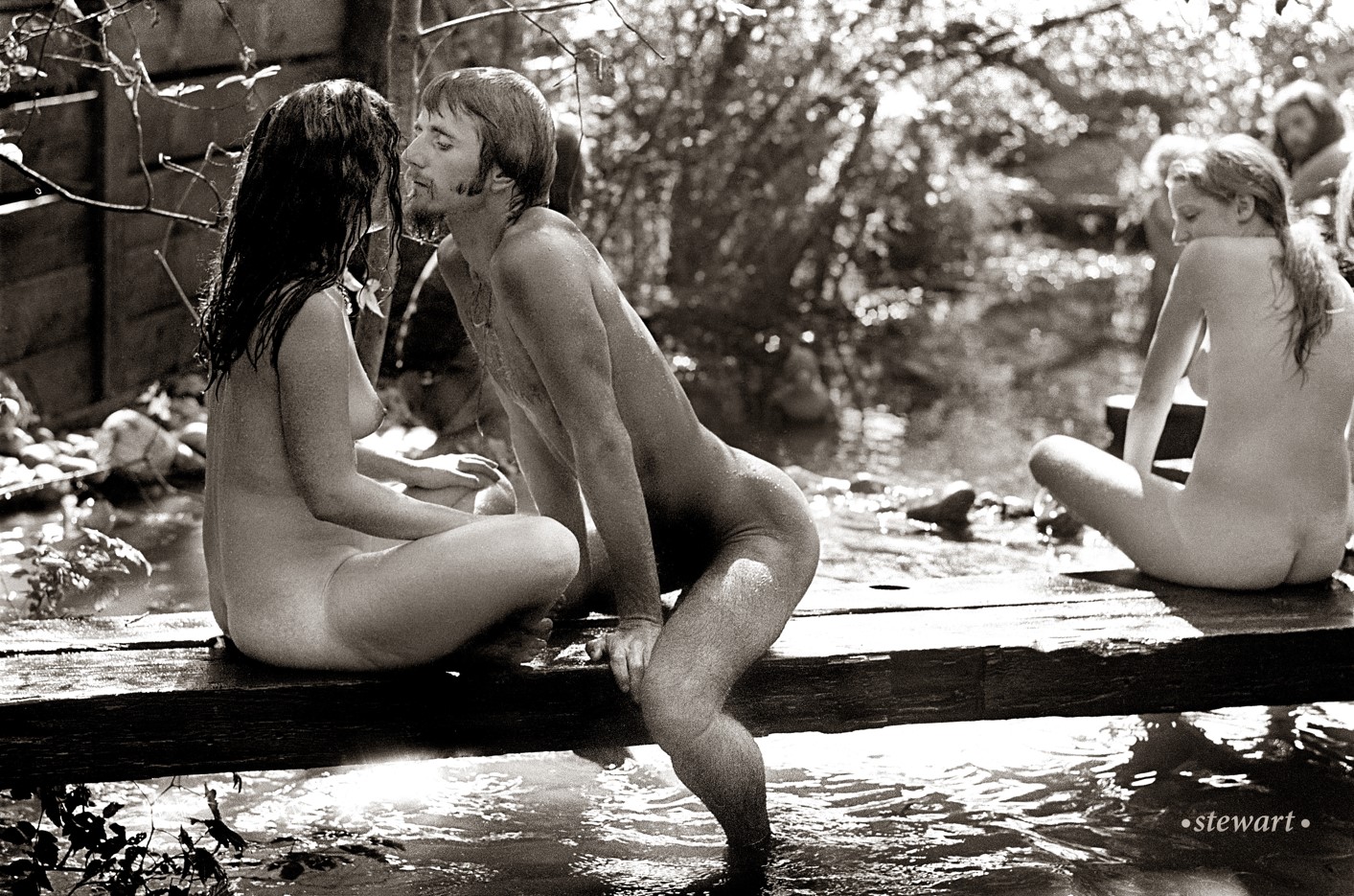
Bruce has taken several hundred photos of a moment in time using fast film, a wide-angle lens and a Nikon FTN. He’s photographed the very young and the very old who happily co-existed with those in their prime. You can see them dancing, swimming, making art and just hanging out.
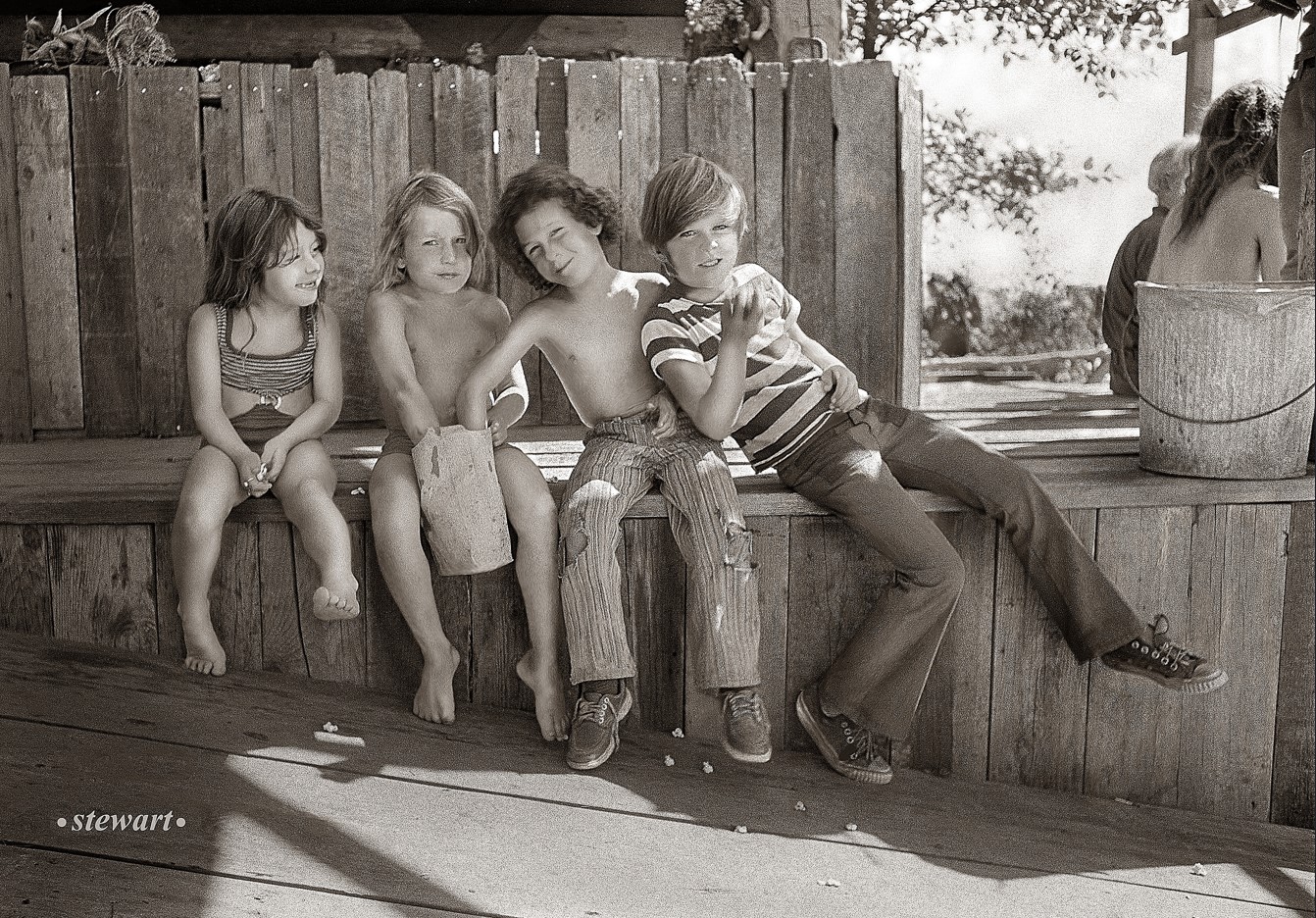
Nature Sanctuary:
I’m not sure what happened to the hotel and shopping mall, but in the end, capitalism trumped the rights of people to occupy public land. Most of the homes were burned down later that year, and nearly all traces of the mudflat shacks were gone by 1973.
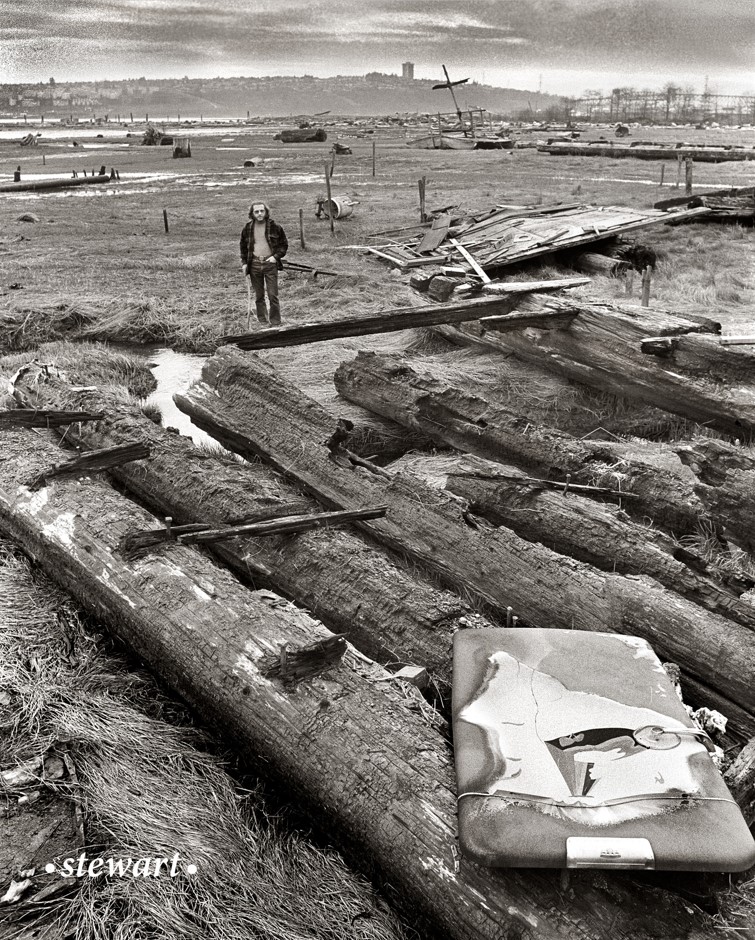
Bruce’s photos, taken that year, show little evidence of the squatter community—just a few charred skids where houses once stood. “Perhaps the saddest image is the old torn off refrigerator door, paint peeling from the intense heat of the fire, like a third-degree burn on scorched skin,” says Bruce. “The end of an experiment in ‘off-the-grid’ living which was decades ahead of its time.”
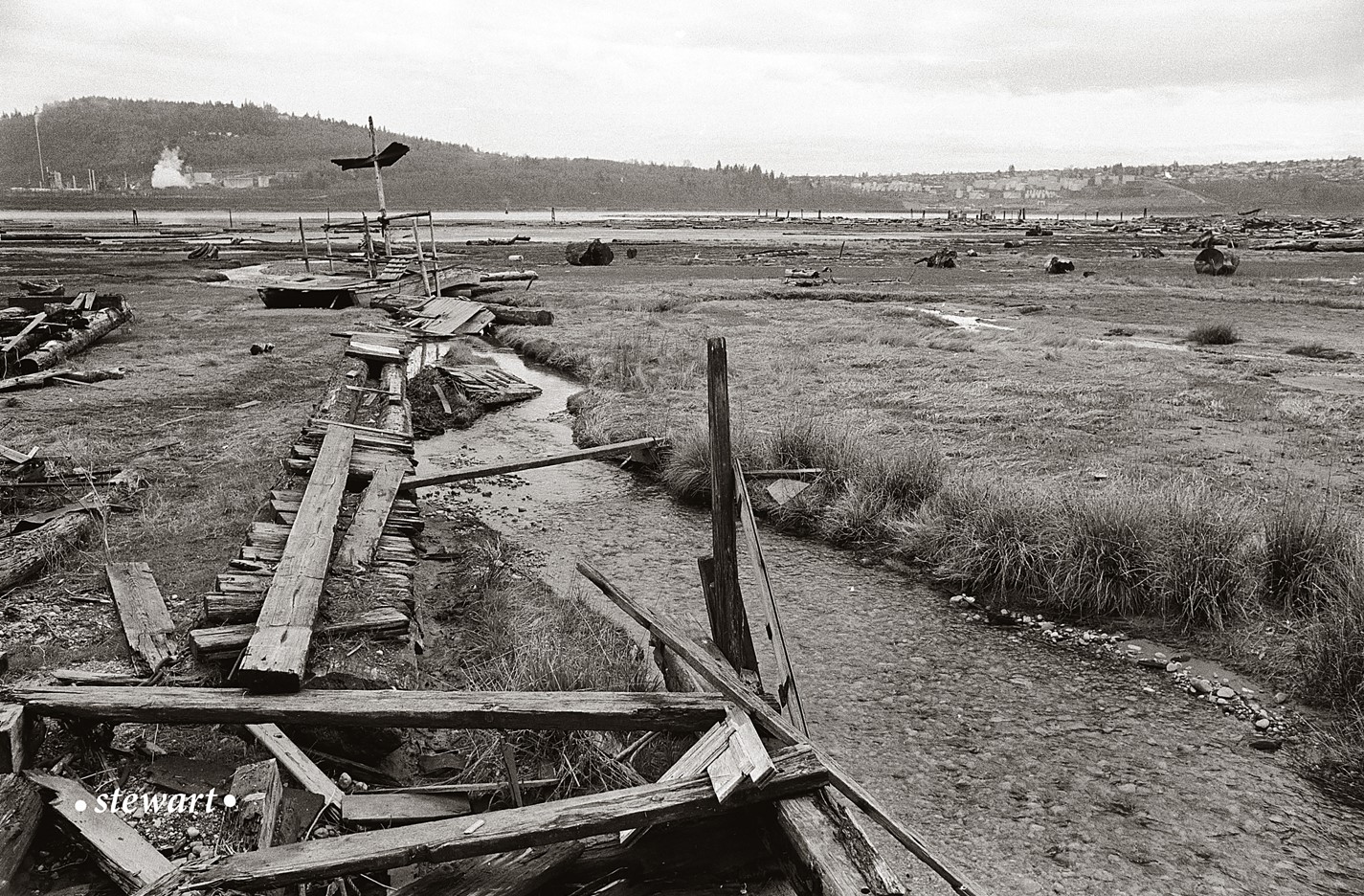
Fortunately, developers also got the boot, and the land has been a nature sanctuary for decades.
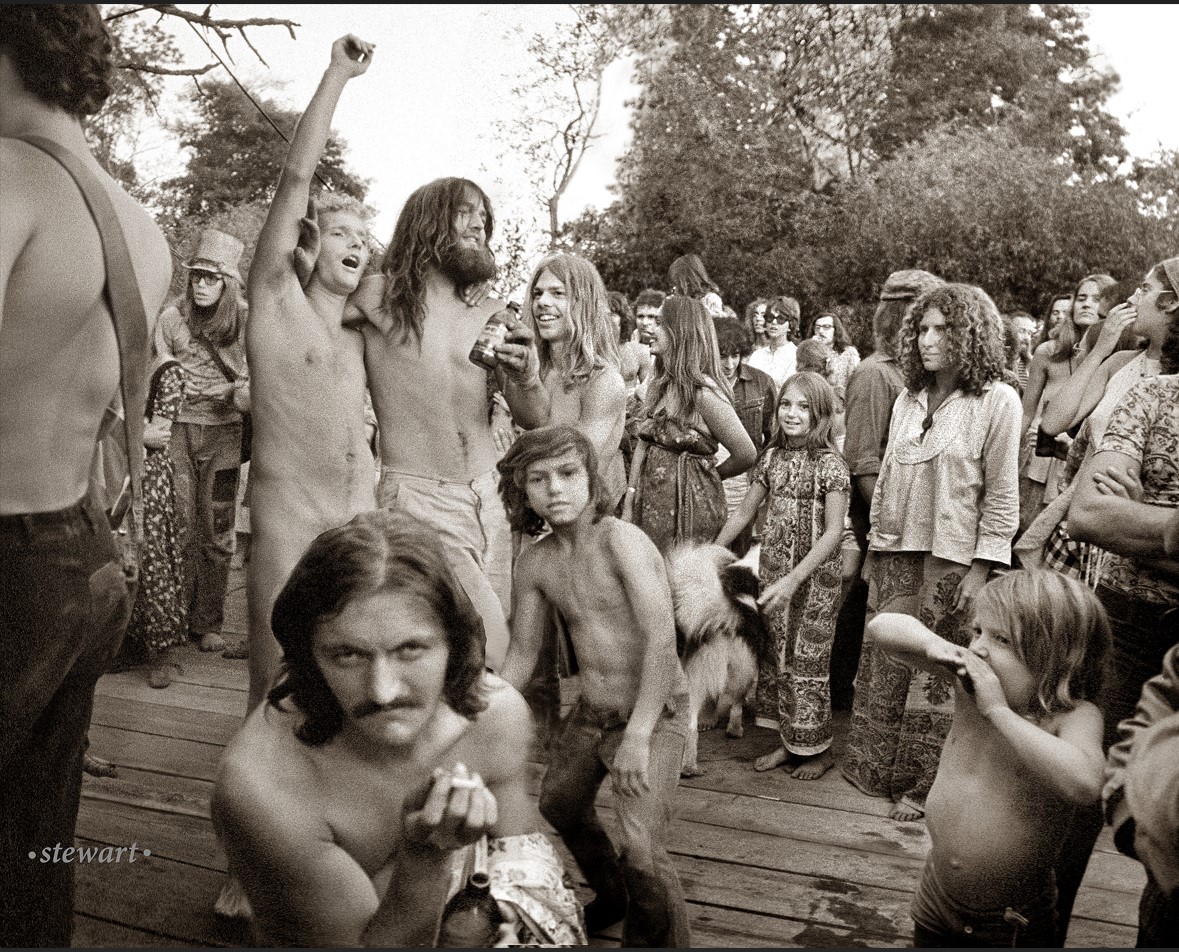
Source: West of Eden: Presentation House Gallery
Related:
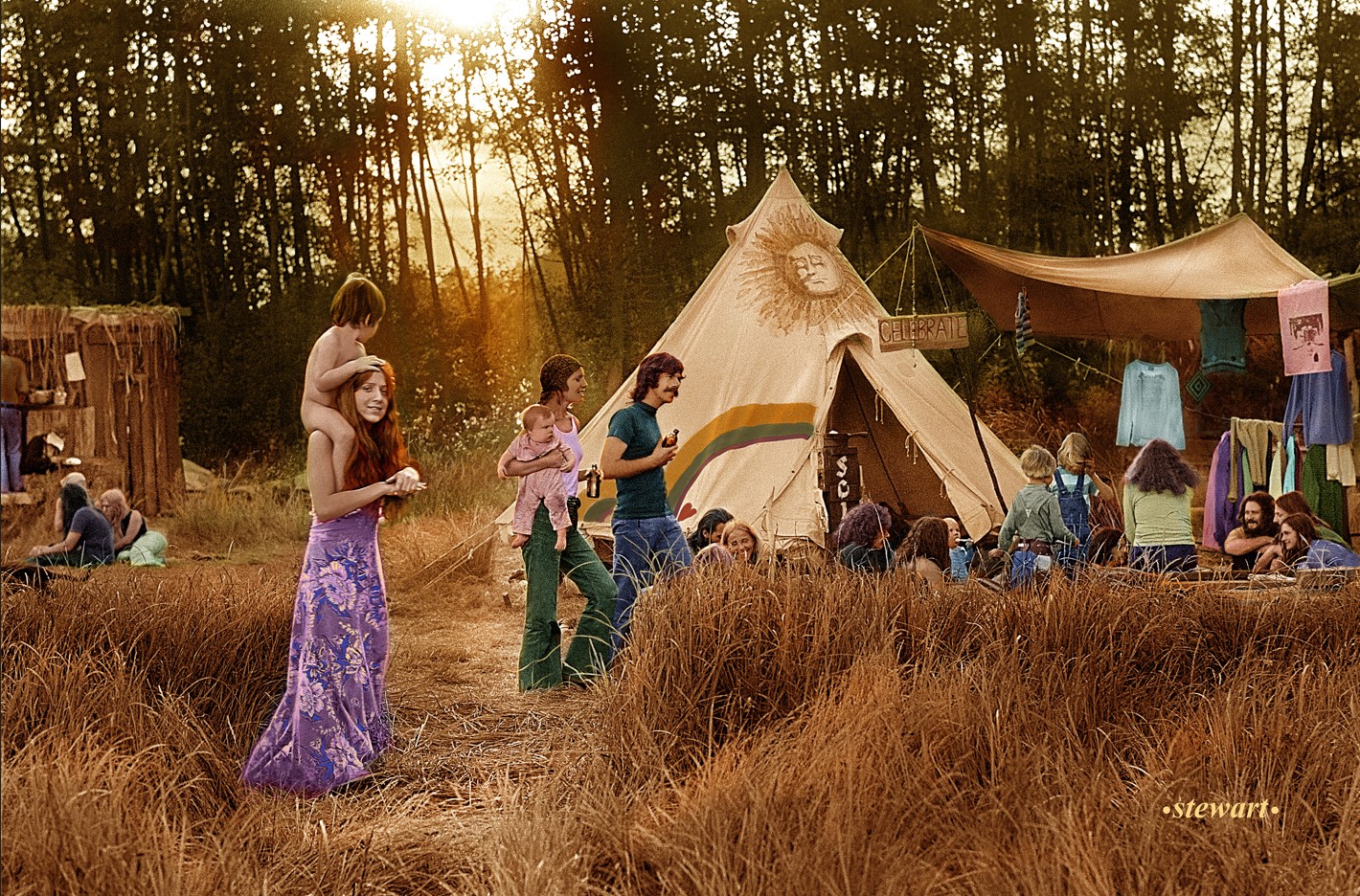
© All rights reserved. Unless otherwise indicated, all blog content copyright Eve Lazarus.



